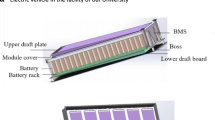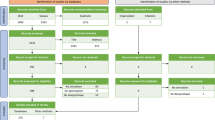Abstract
Considering material designability and the effect of uncontrollability in processing structural performances of composite material, an optimization method for composite pressure hull of underwater vehicle is proposed, which balances the structural weight and reliability. A two-level optimization is conducted first. The first level is layout optimization minimizing the structural weight when the material performance parameters are certain. Fiber volume fraction and laminate plate thickness are set as design variables. Neural network approximation model is utilized. In the second level of optimization (layup optimization) the lamination parameters are introduced. Based on the results of the two-level optimization a collaborative optimization combined with 6σ design theory is implemented, where the σ level is recognized as an evaluation index and the requirements of structure and material are both met. Optimization results show that the σ level of critical buckling pressure and failure index are above 6 as well as the reliability reaches 100%, meanwhile the weight decreases by 15.3%. Collaborative optimization based on lamination parameters and 6σ design can optimize the composite pressure hull effectively with high reliability and solve the problem of low efficiency and non-convergence of direct optimization with design variables.







Similar content being viewed by others
References
Yoo SY, Jun BH, Shim HG, Lee PM (2015) Design and analysis of carbon fiber reinforced plastic body frame for multi-legged subsea walking robot, Crabster. Ocean Eng 102:78–86
Fathallah E, Qi H, Tong L, Helal M (2014) Design optimization of composite elliptical deep-submersible pressure hull for minimizing the buoyancy factor. Adv Mech Eng 6:987903
Davies P, Choqueuse D, Bigourdan B, Chauchot P (2016) Composite cylinders for deep sea applications: an overview. J Press Vessel Technol-Trans ASME 138(6):060904
Gürdal Z, Haftka RT, Hajela P (1999) Design and optimization of laminated composite materials. Wiley, New York
Tsai SW, Pagano NJ (1968) Invariant properties of composite material. Air Force Materials Lab Wright-Patterson AFB OHIO, Defense Technical Information Center, Ft. Belvoir
Jones RM (1999) Mechanics of composite materials. Taylor & Francis, London
Miki M, Sugiyama Y (1991) Optimum design of laminated composite plates using lamination parameters. AIAA J 32(1):275–283
Foldager J, Hansen JS, Olhoff N (1998) A general approach forcing convexity of ply angle optimization in composite laminates. Struct Optimiz 16:201–211
Durand LP (2008) Composite materials research progress. Nova Science Publishers, New York
Setoodeh S, Abdalla MM, Gurdal Z (2006) Design of variable–stiffness laminates using laminate on parameters. Compos Pt B-Eng 37:301–309
Abdalla MM, Setoodeh S, Gurdal Z (2007) Design of variable stiffness composite panels for maximum fundamental frequency using lamination parameters. Compos Struct 81:283–291
Herencia JE, Weaver PM, Friswell MI (2008) Optimization of anisotropic composite panels with T-shaped stiffeners including transverse shear effects and out-of-plane loading. Struct. Multidiscip Optimiz 37:165–184
Topal U, Uzman U (2008) Thermal buckling load optimization of laminated composite plates. Thin-Walled Struct 46:667–675
Thuwis GAA, Breuker RD, Abdalla MM, Gurdal Z (2010) Aeroelastic tailoring using lamination parameters. Struct Multidiscip Optimiz 41:637–646
Kroo IM, Altus S, Braun RD, Gage P, Sobieski I (1994) Multidisciplinary optimization methods for aircraft preliminary design. In: 5th Symposium Multidisc Anal Optim, pp 697–707
Sobieski I, Kroo IM (1996) Aircraft design using collaborative optimization. In: 34th AIAA Aerospace Science Meeting, AIAA Paper 96-0715, pp 15–18
Braun RD, Moore AA, Kroo IM (1997) Collaborative architecture for launch vehicle design. J Spacecr Rocket 34(4):478–486
Gu X, Renaud JE (2001) Implicit uncertainty propagation for robust collaborative optimization. In: 27th ASME Design Automation Conference, DAC-21118, pp 9–12
Martins JRRA, Lambe AB (2013) Multidisciplinary design optimization: a survey of architectures. AIAA J 51(9):2049–2075
Sobieski IP, Kroo IM (2000) Collaborative optimization using response surface estimation. AIAA J 38(10):1931–1938
Alexandrov NM, Lewis RM (2002) Analytical computational aspects of collaborative optimization for multidisciplinary design. AIAA J 40(2):301–309
Vikrant A, Shapour A (2006) A genetic algorithms based approach for multidisciplinary multiobjective collaborative optimization. In: 11th AIAA/ISSMO Multidisciplinary Analysis and Optimization Conference pp 630–646
Li M, Azarm S (2008) Multiobjective collaborative robust optimization with interval uncertainty and interdisciplinary uncertainty propagation. J Mech Des 130(8):1–11
Belegundu AD, Halberg E, Yukish MA, Simpson TW (2000) Attribute-based multidisciplinary optimization of undersea vehicles. In: 8th Symposium Multidisc Anal Optim, AIAA 2000-4865, Long Beach, California
Fu S, Huang H, Lin Z (2012) Collaborative optimization of container ship on static and dynamic responses. Procedia Eng 31:613–621
Liu K, Luo W (2016) Design of the lines of underwater vehicles based on collaborative optimization. J Mar Sci Technol 21:709–714
Fathallah E, Qi H, Tong L, Helal M (2015) Design optimization of lay-up and composite material system to achieve minimum buoyancy factor for composite elliptical submersible pressure hull. Compos Struct 121:16–26
Chen JQ, Ge R, Wei JH (2008) Probabilistic optimal design of laminates by using the improved particle swarm optimization. Eng Optimiz 40(8):695–708
Moses F (1982) Systems reliability developments in structural engineering. Struct Saf 1:3–13
Lei G, Zhu JG, Guo YG, Hu JF, Xu W, Shao KR (2013) Robust design optimization of PM-SMC motors for six sigma quality manufacturing. IEEE Trans Magn 49(7):3953–3956
Vasiliev VV, Morozov EV (2007) Advanced mechanics of composite materials. Elsevier Science, Oxford
Wu ZQ, Jia WJ, Zhao LR, Wu CH (2016) Maximum wind power tracking based on cloud RBF neural network. Renew Energy 86:466–472
Faria AR (2015) Optimization of composite structures under multiple load cases using a discrete approach based on lamination parameters. Int J Numer Methods Eng 104:827–843
Acknowledgements
The presented work is financially supported by the National Natural Science Foundation of China (51009040\E091002) and the National High Technology Research and Development Program of China (2011AA09A106).
Author information
Authors and Affiliations
Corresponding author
About this article
Cite this article
Li, B., Pang, Y., Zhu, X. et al. Collaborative optimization and 6σ design for composite pressure hull of underwater vehicle based on lamination parameters. J Mar Sci Technol 23, 557–566 (2018). https://doi.org/10.1007/s00773-017-0492-4
Received:
Accepted:
Published:
Issue Date:
DOI: https://doi.org/10.1007/s00773-017-0492-4




